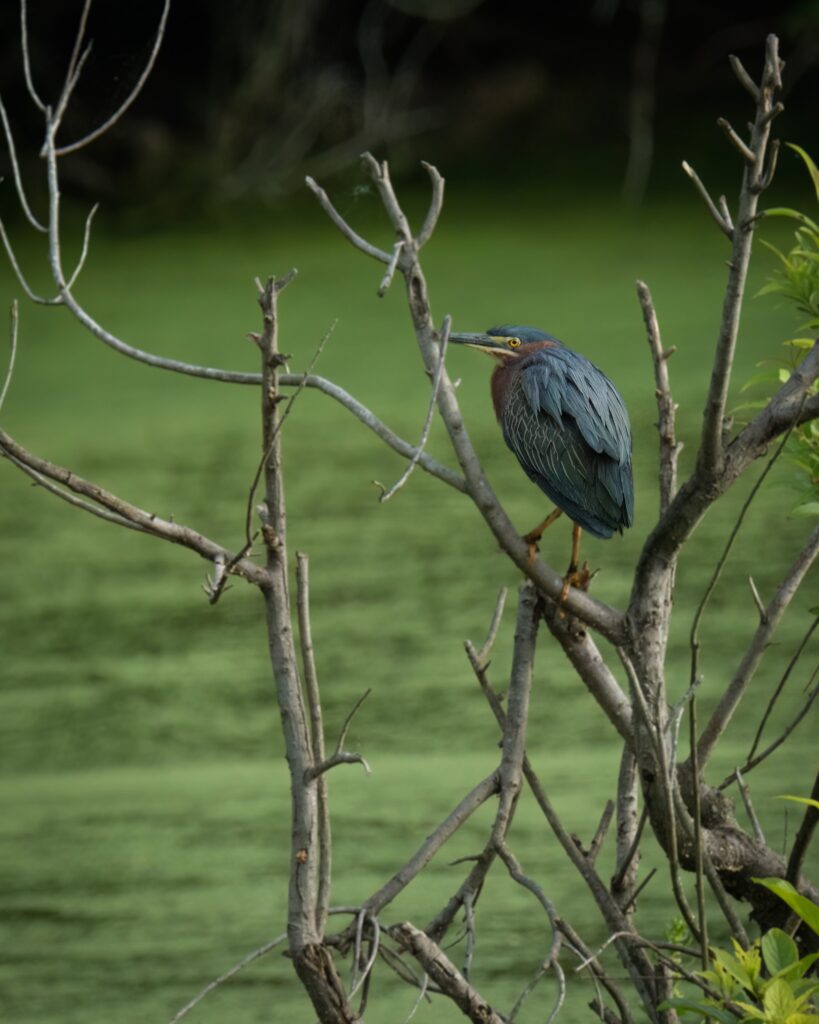The first thing to know about bird photography is that it’s hard. And the second thing to know is that you will need a long lens.
So I got a Fujifilm XF 100-400mm f/4.5-5.6 R LM OIOS WR lens. For full-frame camera folks, that’s equivalent to 600mm at the long end. And that’s not long enough, or else I haven’t yet learned how to get close enough. Maybe I’ll add an XF1.4X TC WR teleconverter to help with that.

I live in coastal Georgia and have access to a number of parks, wildlife refuges, wetlands conservation areas, and the like. These are all great places to find birds (and alligators). I also ‘discovered’ eBird.org, a project of Cornell University. There you can learn to identify bird species and discover where others are seeing birds in your area. They also offer the free Merlin Bird ID app that will suggest the species of bird in a picture you provide.
A good source for information about photographing birds is the YouTube channel of Simon d’Entremont. He presents both beginner and advanced topics in a way that is understandable and is accompanied by example photos. I learned a lot from his videos.
In particular, I learned about the camera technique of shooting using manual aperture and shutter speed with auto ISO. Once you have made the choice for depth of field and the shutter speed necessary to stop the action, the camera makes the exposure right by changing ISO. That will inevitably lead to many high ISO images, but a noisy photo is better than a blurry one. Today’s cameras are getting better and better at reducing noise at high ISOs, but even the best cameras will be challenged at 6400 ISO and even 12800.
A good lens might still be a little soft at its longest zoom. And if you have to crop deeply to create the best composition, the image will be softened more. Software can be used in post-processing to help with shortfalls in image quality. Lightroom 12.3 has introduced very effective noise reduction processing. Topaz Photo AI and DxO PureRAW have been doing that for a while and they add the ability to sharpen and increase resolution. For my workflow, I’ve chosen Lightroom and Photo AI.

Leave a Reply